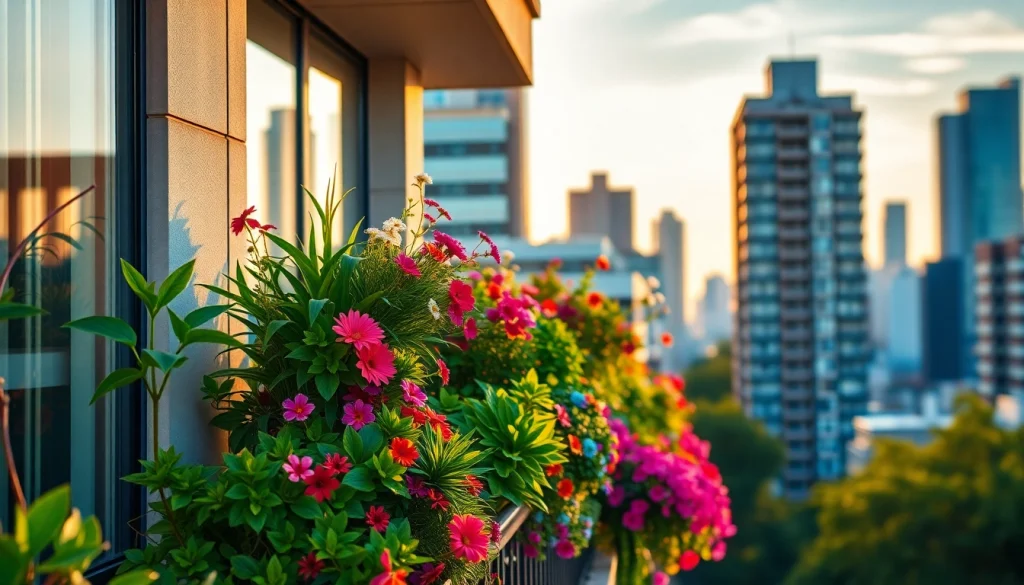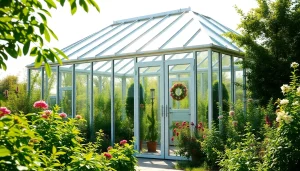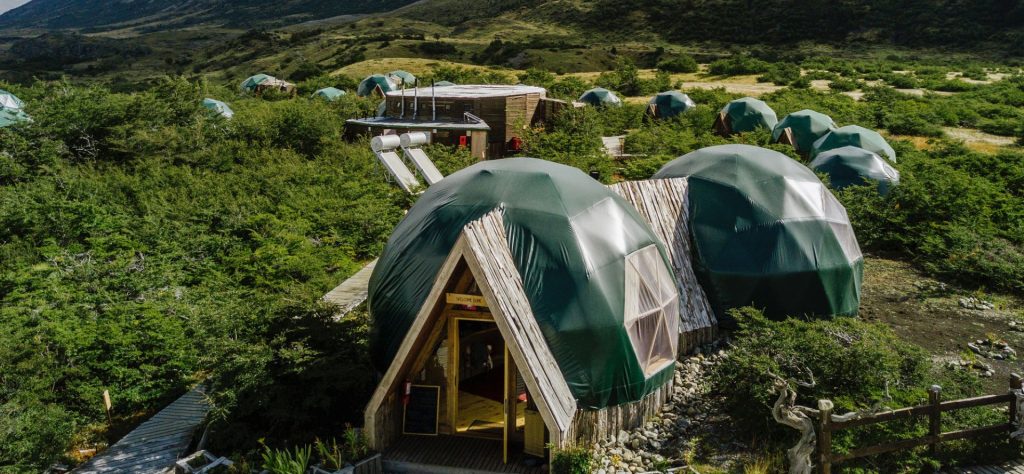Understanding Vertikale Gärten: An Introduction
In an era where urbanization is rapidly changing our landscapes, the concept of vertical gardening, or vertikale Gärten, is gaining traction among eco-conscious individuals and gardening enthusiasts alike. These innovative gardens allow plants to grow upward rather than outward, dramatically transforming small spaces into green havens. This comprehensive guide aims to introduce you to the fundamentals of vertical gardening, its numerous benefits, and how to get started on your own vertical garden journey.
What Are Vertikale Gärten?
Vertikale Gärten, or vertical gardens, involve cultivating plants on vertical surfaces such as walls, fences, or specially designed structures. This gardening technique can utilize a variety of planting methods, including hydroponics, soil-based systems, or modular planters. Unlike traditional gardening, which requires horizontal space, vertical gardens maximize limited area and provide an alternative to conventional backyards, making them ideal for urban environments.
Benefits of Vertical Gardening
The advantages of creating a vertical garden are plentiful:
- Space-saving: Perfect for those with limited gardening space, vertical gardens make effective use of vertical surfaces, enabling you to grow plants in small areas.
- Air Quality Improvement: Plants naturally filter air pollutants, and vertical gardens contribute to cleaner air while enhancing overall aesthetics.
- Temperature Regulation: Vertical gardens can help cool buildings, improve energy efficiency, and maintain pleasant microclimates.
- Enhanced Aesthetics: They provide a visually appealing feature that can transform bland walls into lively displays of color and greenery.
- Food Production: Grow your own herbs and vegetables, ensuring freshness and sustainability with your food sources.
Common Types of Vertikale Gärten
There are various types of vertical gardens suited for different spaces and plant varieties:
- Living Walls: Implementing a modular panel system that supports a wide range of plants, living walls are often found in urban settings.
- Trellis Gardens: Using trellis structures, these gardens support climbing plants, providing an affordable and straightforward setup.
- Vertical Planters: Freestanding or wall-mounted planters that allow easy access to compact sections of soil or hydroponic systems.
- Green Facades: Vertical gardens integrated with the building’s architecture using climbers that root in the ground or are sustained by wall planters.
Getting Started with Your First Vertical Garden
Embarking on your vertical gardening project requires careful planning and consideration. Here’s a step-by-step approach to help you kickstart your journey towards a lush vertical garden.
Choosing the Right Location for Vertikale Gärten
The right location is crucial for your vertical garden’s success. Consider the following factors:
- Sunlight: Analyze how much sunlight the area receives. Most edible plants thrive in full sun, while some decorative plants prefer indirect light.
- Water Access: Proximity to a water source is essential, especially if you’re using a soil-based vertical garden that requires regular watering.
- Visibility: Choose a location where your vertical garden can be appreciated, maximizing enjoyment and engagement.
- Wind Protection: If you live in a windy area, consider locations that provide some shelter to protect delicate plants.
Essential Tools and Materials You Need
Before planting, gather the necessary tools and materials:
- Planting Containers: Choose pots, wall-mounted planters, or modular panels suitable for your chosen planting method.
- Soil or Growing Medium: Depending on your method (soil-based or hydroponic), acquire appropriate planting media.
- Watering Tools: A watering can or drip irrigation system may be necessary depending on the size and setup of your garden.
- Gardening Tools: Basic tools like gloves, pruning shears, and trowels will aid in planting and maintaining your garden.
Selecting Plants for Success
Choosing the right plants is vital for a thriving vertical garden. Here are some tips for selecting plants:
- Assess Light Requirements: Look for plants that thrive under the conditions of your selected location.
- Consider Growth Patterns: Select plants with varying heights and growth habits to create an eye-catching composition.
- Mix Edible and Ornamental Plants: Combine herbs, vegetables, and decorative plants for functional yet beautiful results.
- Research Plant Compatibility: Ensure selected plants can coexist and won’t compete for resources.
Design Ideas and Inspiration for Vertikale Gärten
Once you’ve established your vertical garden’s foundation, the next step is to focus on design. From simple arrangements to intricate layouts, here’s how to make your vertical garden a stunning focal point.
Creative Styles for Every Space
Your vertical garden can reflect your personal taste and style. Here are some creative design ideas:
- Modern Minimalist: Use monochromatic planters and geometric arrangements for a sleek, contemporary look.
- Rustic Charm: Incorporate reclaimed wood and natural materials for a cozy, homey feel.
- Bohemian Vibe: Relaxed arrangements with bright, colorful pots can enhance a free-spirited atmosphere.
- Functional Vertical Garden: Use vertical structures to define outdoor dining spaces or create privacy screens among neighbors.
Incorporating Accessories and Decor in Your Vertical Garden
Accessories and decorative elements can enhance your vertical garden’s appeal:
- Lighting: Incorporate fairy lights or lanterns to create a magical ambiance during nighttime.
- Artwork: Add decorative elements such as sculptures or murals to complement your green display.
- Functional Features: Consider hanging herbs near your kitchen window or outfitting your garden with a drip irrigation system for practicality.
Case Studies: Successful Vertical Gardens
Analyzing successful vertical gardens can provide inspiration and insights:
- The Green City Wall: A prominent project in Singapore demonstrating vertical gardening on a full building facade showcasing biodiversity.
- Patrick Blanc’s Vertical Gardens: Renowned for his innovative living walls, Blanc’s work exemplifies the artistic blend of design and horticulture.
- Urban Rooftop Gardens: Many urban rooftops worldwide boast vertical gardens as a means to maximize small spaces and improve air quality.
Maintenance Tips for Thriving Vertikale Gärten
Watering and Fertilization Best Practices
Maintaining a healthy watering routine is critical:
- Monitor Soil Moisture: Check moisture levels regularly; soil should remain consistently moist but not oversaturated.
- Use Quality Fertilizers: Employ organic fertilizers to ensure your plants receive necessary nutrients without harmful chemicals.
- Schedule Watering: Develop a routine based on temperature, plant type, and rainfall to optimize water usage.
Pest Control in Vertical Gardens
Keeping pests at bay is essential for longevity in vertical gardening:
- Regular Inspections: Inspect plants weekly for signs of pests or disease.
- Natural Deterrents: Employ organic solutions such as neem oil or insecticidal soaps to manage pest populations.
- Encourage Beneficial Insects: Attract ladybugs or lacewings to help control aphid populations naturally.
Seasonal Care for Continuous Growth
Seasonal changes will impact your vertical garden:
- Winter Prep: Protect sensitive plants by moving containers indoors or wrapping plants with burlap.
- Spring Clean-Up: Trim dead or damaged foliage in spring to promote new growth.
- Summer Care: Increase watering frequency during high temperatures to prevent drought stress on plants.
Exploring the Future of Vertikale Gärten
The future of vertical gardening is bright, fueled by sustainability, innovation, and community engagement. Here are some emerging trends and practices shaping this field:
Sustainable Practices in Vertical Gardening
As initiatives for environmental wellness grow, sustainable practices become paramount:
- Waste Reduction: Use recycled materials for building vertical garden structures, minimizing environmental impact.
- Water Conservation: Implement rainwater harvesting systems to sustain vertical gardens.
- Organic Gardening: Commit to organic practices to foster ecosystem health and reduce chemical use.
Technological Innovations Impacting Vertikale Gärten
Technology is playing a significant role in revolutionizing vertical gardening:
- Smart Irrigation: Automated systems equipped with sensors can monitor soil moisture and optimize water usage.
- Hydroponics Advancements: Innovative vertical hydroponic systems offer various mediums to efficiently grow plants.
- Apps for Garden Management: Mobile applications are emerging to assist gardeners in monitoring growth, pest control, and maintenance.
Community Initiatives and Urban Green Spaces
Community efforts are fostering urban green spaces through vertical gardens:
- Community Gardens: Neighborhood initiatives adopt vertical gardening to enhance food security and reduce urban heat.
- Public Recreation Areas: City planners increasingly incorporate vertical gardens into public parks and buildings to improve aesthetics and ecology.
- Educational Programs: Workshops and classes are growing in popularity, sharing knowledge about vertical gardening with communities.








